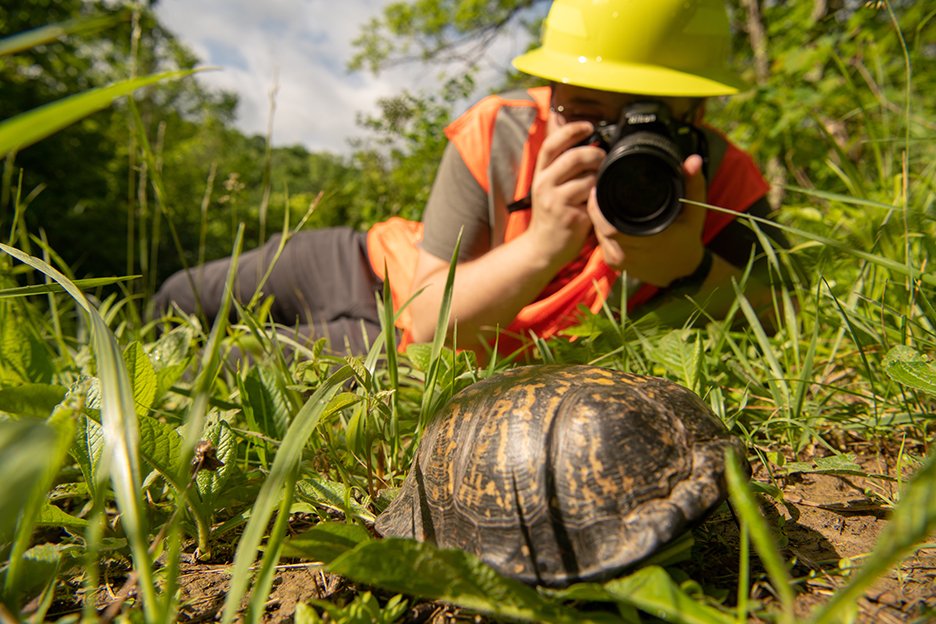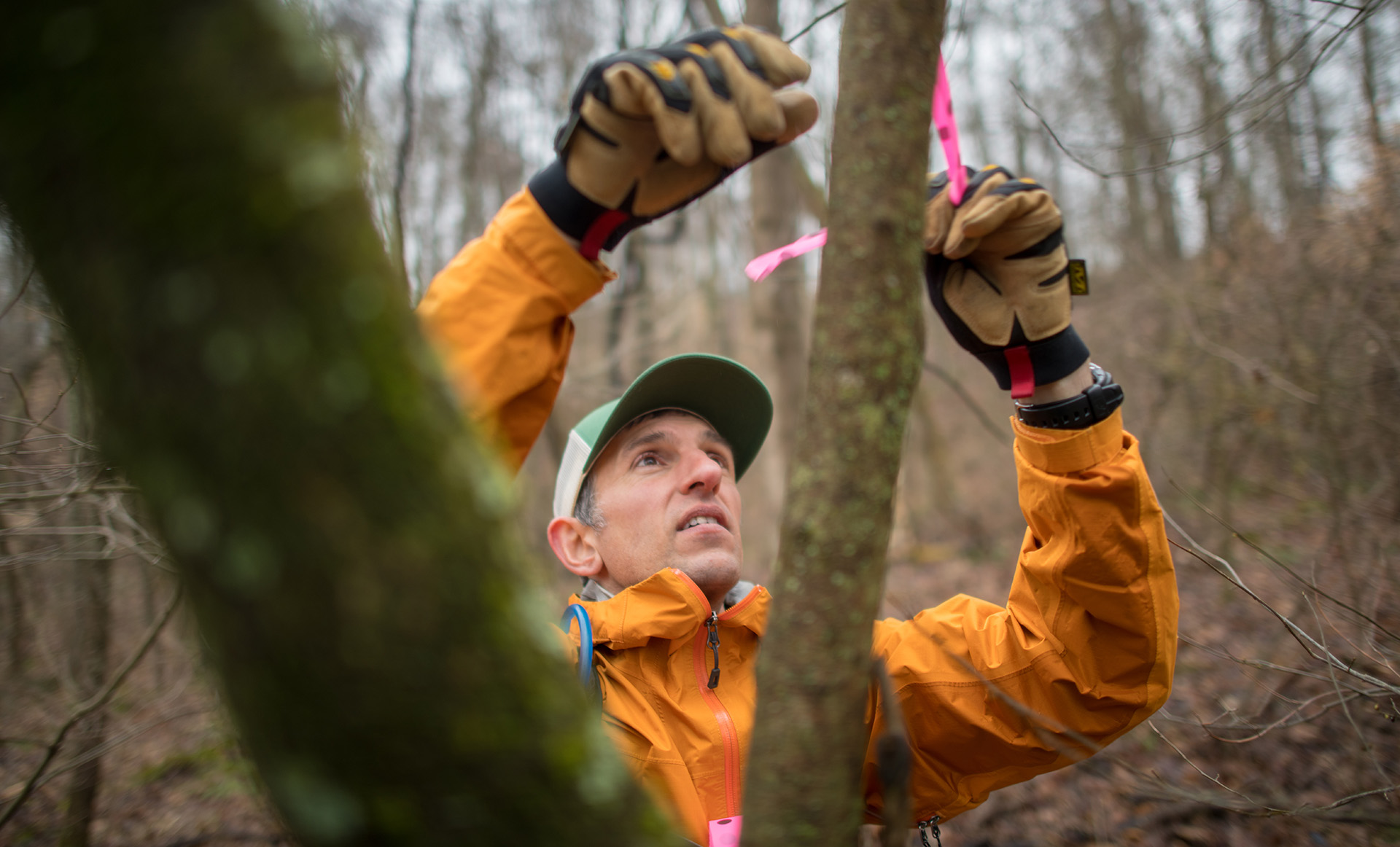
During the summer of 2017, Kyle Brooks and a fellow Ohio University intern walked the first phase of the proposed 88-mile, multi-use Baileys Trail System in the Wayne National Forest’s (known locally as “the Wayne”) Athens District. Through heat, rain, and brambles, the students were tasked with recording habitats for plant and wildlife species that could be adversely impacted by the trail. They found two populations of the state-endangered blue corporal butterfly and vernal pools important to salamander breeding. In the end, the trail route was altered to accommodate wildlife.
Federal guidelines say new trails on federal lands must go through an environmental analysis, a process that can take years. Thanks to a burgeoning partnership between OHIO student interns and the Wayne, the process took only a matter of months.
“It was a cool way of giving us experience, but doing something that had to be done anyway,” says Brooks, BS ’17, now a photojournalism resource assistant for the Wayne. “This project couldn’t move forward without these surveys being done.”

Kyle Brooks, BS ’17 [ABOVE], documents wildlife, part of the trail planning process.
OHIO students from across disciplines—including students in business, economics, and education—have been collecting valuable data in support of projects in the Wayne. College of Business students researched ecotourism marketing, College of Arts & Sciences economics students used the trail system as a service learning project, and students in The Patton College of Education conducted a case study in ecotourism. These outcomes align squarely with one of OHIO’s goals: building a university engagement ecosystem that coordinates with the regional community and uses strategy and innovation to develop new and sustainable economies.“
Three of our goals throughout the project have been sustainable economic development ... opportunities for health and wellness, and this sense of community connectivity and pride,” says Danny Twilley, PHD ’17, senior lecturer of sport and recreation pedagogy in The Patton College. “I really think [the partnership] is going to be a strong reciprocal relationship for both organizations. Both are important to the region, both bring uniqueness to our region.”
Twilley cites one financial feasibility study that predicts the Baileys Trail System will host 180,000 visitors per year and bring in more than $20 million annually in revenue after the trail system is complete. Another study shows that 60 percent of trail users exercise more regularly than before they became trail users, he says.
The first phase of the Baileys Trail System is expected to be completed by December 2020.
Feature photograph: Peter Kotses, AB ’92, helps mark the path for the new 88-mile Baileys Trail System. Photos by Ben Wirtz Siegel, BSVC ’02




